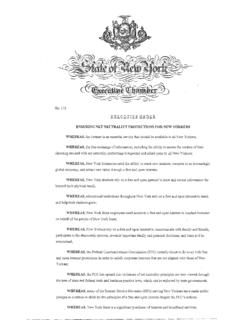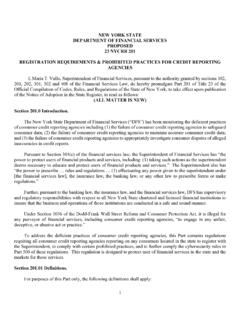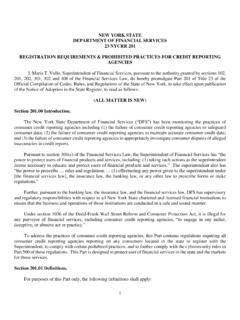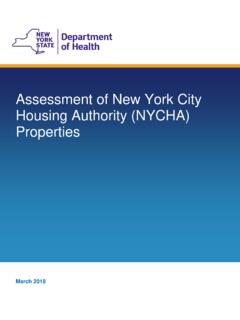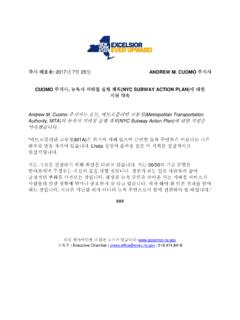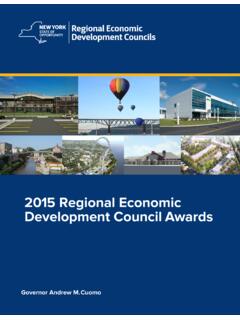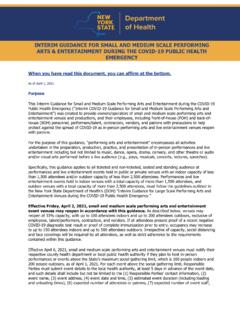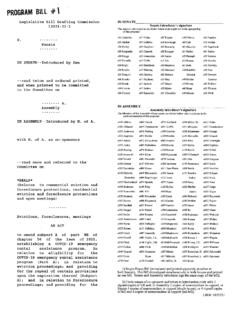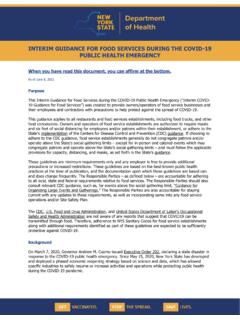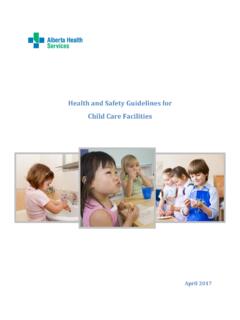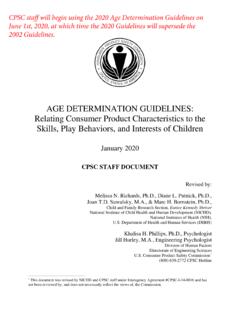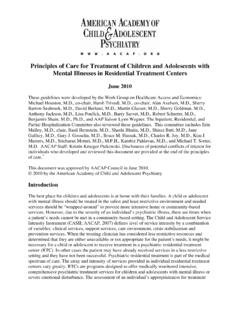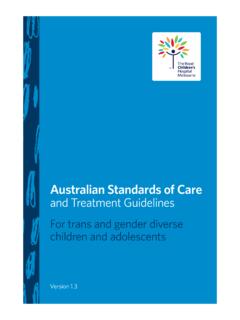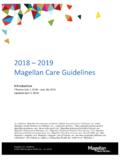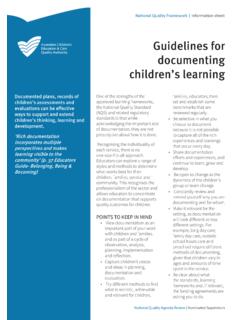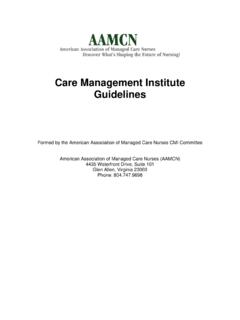Transcription of INTERIM GUIDANCE FOR CHILD CARE, DAY CAMP, AND …
1 INTERIM GUIDANCE FOR CHILD care , DAY CAMP, AND OVERNIGHT CAMP PROGRAMS DURING THE COVID-19 PUBLIC HEALTH EMERGENCY When you have read this document, you can affirm at the bottom. As of June 7, 2021 Purpose This INTERIM GUIDANCE for CHILD care , Day Camp, and Overnight Camp Programs during the COVID-19 Public Health Emergency ( INTERIM COVID-19 GUIDANCE for CHILD care , Day Camp, and Overnight Camp Programs ) was created to provide owners/operators of CHILD care , day camp, and overnight camp programs with precautions to help protect against the spread of COVID-19. The following GUIDANCE applies to both regulated and unregulated programs for children . Additional requirements for overnight programs are contained in Section V. These guidelines are minimum requirements only and the owner/operator of any CHILD care , day camp, or overnight camp program is free to provide additional precautions or increased restrictions.
2 These guidelines are based on the best-known public health practices at the time of publication, and the documentation upon which these guidelines are based can and does change frequently. The Responsible Parties as defined below are accountable for adhering to all local, state and federal requirements relative to CHILD care , day camp, and overnight camp program activities and operations. The Responsible Parties are also accountable for staying current with any updates to these requirements, as well as incorporating same into any activities and/or Site Safety Plan. Background On March 7, 2020, Governor Andrew M. Cuomo issued Executive Order 202, declaring a state disaster emergency in response to the COVID-19 public health emergency. Since May 15, 2020, New York State has developed and deployed a phased economic reopening strategy based on science and data, which has allowed specific industries to safely resume or increase activities and operations while protecting public health during the COVID-19 pandemic.
3 In addition to the following standards, businesses must continue to comply with the GUIDANCE and directives for maintaining clean and safe work environments issued by DOH. Please note that where GUIDANCE in this document differs from other GUIDANCE documents issued by New York State, the more recent GUIDANCE shall apply. Standards for Responsible Operation of CHILD care , Day Camp, and Overnight Camp Programs in New York State No activities or operations at a CHILD care , day camp, or overnight camp program can occur without meeting the following minimum State standards, as well as applicable federal requirements, including but not limited to such minimum standards of the Americans with Disabilities Act (ADA), Centers for Disease Control and Prevention (CDC), Environmental Protection Agency (EPA), and United States Department of Labor s Occupational Safety and Health Administration (OSHA).
4 The State standards contained within this GUIDANCE apply to all CHILD care , day camp, and overnight camp programs in operation during the COVID-19 public health emergency until rescinded or amended by the 2 State. The owner/operator of the CHILD care , day camp, or overnight camp program, or another party as may be designated by the owner/operator (in either case, the Responsible Parties ), shall be responsible for meeting these standards. The following GUIDANCE is organized around three distinct categories: people, places, and processes. I. PEOPLE A. Physical Distancing Responsible Parties must implement a property-specific capacity limitation for children /campers that ensures appropriate social distancing ( six-feet separation or other appropriate social distancing for the setting) can be maintained during activities and travel throughout the property between stable groups with children /campers who are not fully vaccinated.
5 O Fully vaccinated against COVID-19 is defined as 14 days after completion of the vaccine series. All other individuals are considered unvaccinated. Social distancing and face covering requirements do not apply to those who are fully vaccinated except as otherwise specified in this document. o Stable groups that consist entirely of fully vaccinated campers and staff are not required to maintain social distancing. Responsible Parties must ensure that staff who are not fully vaccinated maintain a distance of at least six feet from other unvaccinated staff at all times, unless safety or the core activity requires a shorter distance ( jointly caring for a CHILD or responding to the needs of a camper). Staff shall include all employees, volunteers, and household members in home-based day care modalities while interacting with day care children and/or in the day care space.
6 Responsible Parties should encourage that children /campers age 2 and older who are not fully vaccinated wear face coverings except when eating, drinking, showering, swimming, or sleeping/resting. Young children /campers ( , those that are not yet in kindergarten) do not need to wear face coverings when they are in CHILD care or day camp program facility or area. Older unvaccinated children /campers are strongly encouraged but not required to wear face coverings indoors as feasible. In addition, the outdoor space that belongs to and/or is exclusively used by the CHILD care or children s camp program is not considered a public place for the purposes of this GUIDANCE . children /campers and staff are not required to wear a face covering when utilizing the outdoor space that belongs to and/or is exclusively used by the CHILD care or children s camp program.
7 CHILD care programs and children s camps that have access to a pool must adhere to State and DOH guidelines regarding swimming pools. Face coverings must be worn during transportation by individuals who are not fully vaccinated. o CHILD care and children s camps may establish a universal policy for face coverings for children /campers over age 2 and for those who can medically tolerate them. o DOH strongly recommends masks in indoor settings where vaccination status is unknown. o Stable groups that include unvaccinated children /campers must maintain at least a six-foot distance from other stable groups of children /campers. o Unvaccinated staff must wear a face covering at all times while indoors. Fully vaccinated staff are encouraged to model wearing a face covering when with children /campers at times when children /campers must wear face coverings.
8 3 Face coverings should never be worn by children under age 2, or by a CHILD unable to medically tolerate a face covering. children /campers who are unable to tolerate face coverings may be within six feet of unvaccinated staff, who are wearing a face covering, to receive necessary services. Acceptable face coverings: o Acceptable face coverings for COVID-19 include but are not limited to cloth-based 2-ply face coverings and disposable masks that securely cover both the mouth and nose (bandanas, buffs and face shields are not acceptable face coverings). o However, cloth, disposable, or other homemade face coverings are not acceptable face coverings for workplace activities that typically require a higher degree of protection for personal protective equipment (PPE) due to the nature of the work. For those activities, N95 respirators or other PPE used under existing industry standards should continue to be used, as is defined in accordance with OSHA guidelines .
9 Responsible Parties must ensure that staff and children /camper groupings are as static as possible by having the same group of children /campers stay with the same staff whenever and wherever possible ( stable group/cohort). Group size should be as small as possible but must be limited to no more than thirty-six (36) children or campers. While the maximum sized group can be up to 36 children , programs must still follow applicable regulations regarding group sizes and staff/ CHILD ratios. The restriction on group size does not include staff providing supervision for children /campers. o children s Camps that consist entirely of fully vaccinated staff and campers are not required to establish stable groups. o Responsible Parties must limit groups to 36 or fewer children /campers, excluding staff, in a specific area ( room) at any given time whenever possible.
10 O Responsible Parties must ensure that different stable groups of up to 36 children /campers have no or minimal contact with one another and avoid utilizing common spaces at the same time, to the greatest extent possible. o Responsible Parties should maintain a staffing plan that does not require staff to float between different classrooms or stable groups of children , unless such rotation is necessary to safely supervise the children /campers. o If Responsible Parties allocate time for children /campers to rest during the day ( nap time), Responsible Parties should place children /campers at least six feet apart and head-to-toe for the duration of rest, when feasible. Responsible Parties may modify the use and/or restrict the number of work areas and seating areas for their staff, so that individuals who are not fully vaccinated are at least six feet apart in all directions ( side-to-side and when facing one another) and are not sharing work areas without cleaning and disinfection between use.
